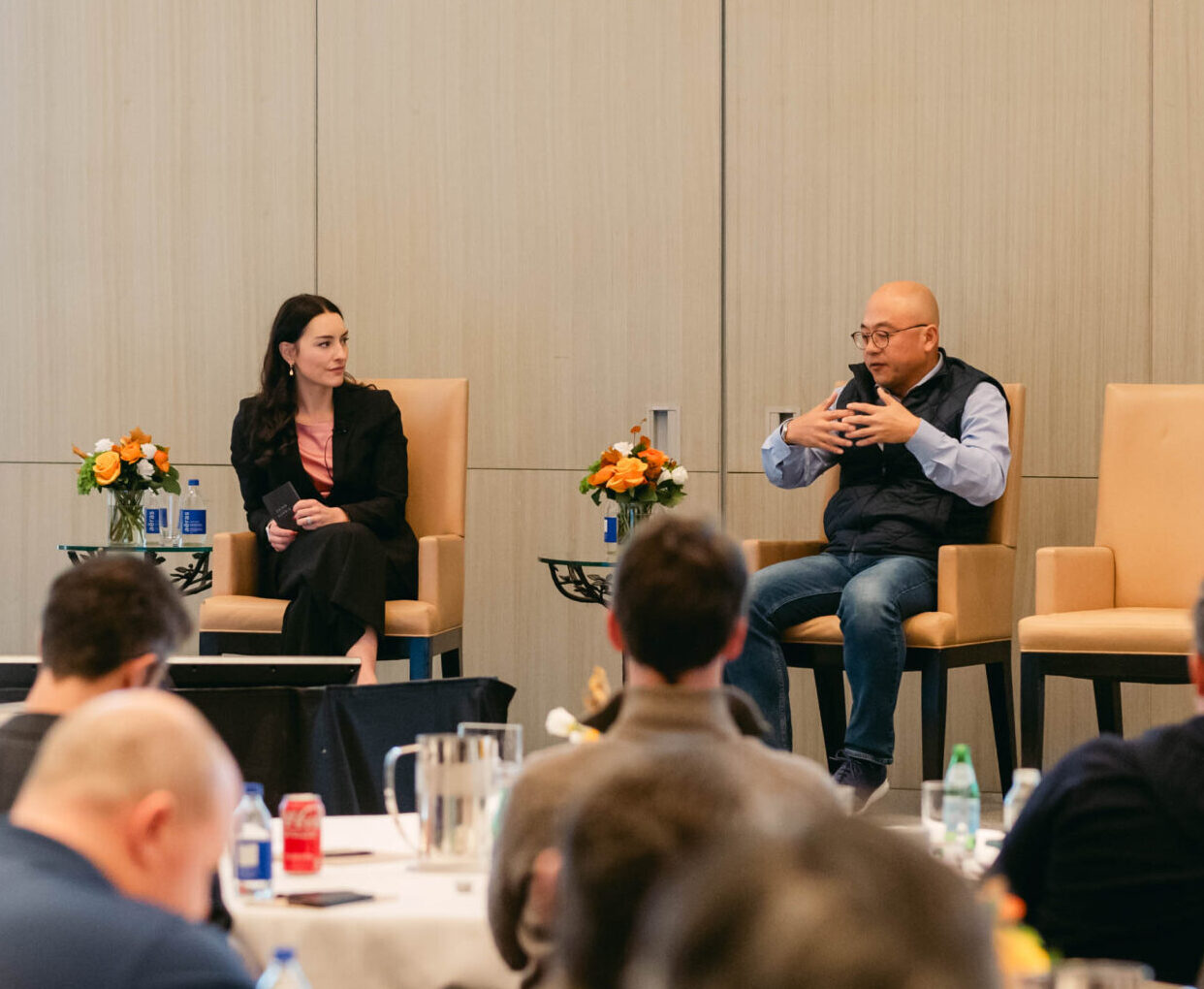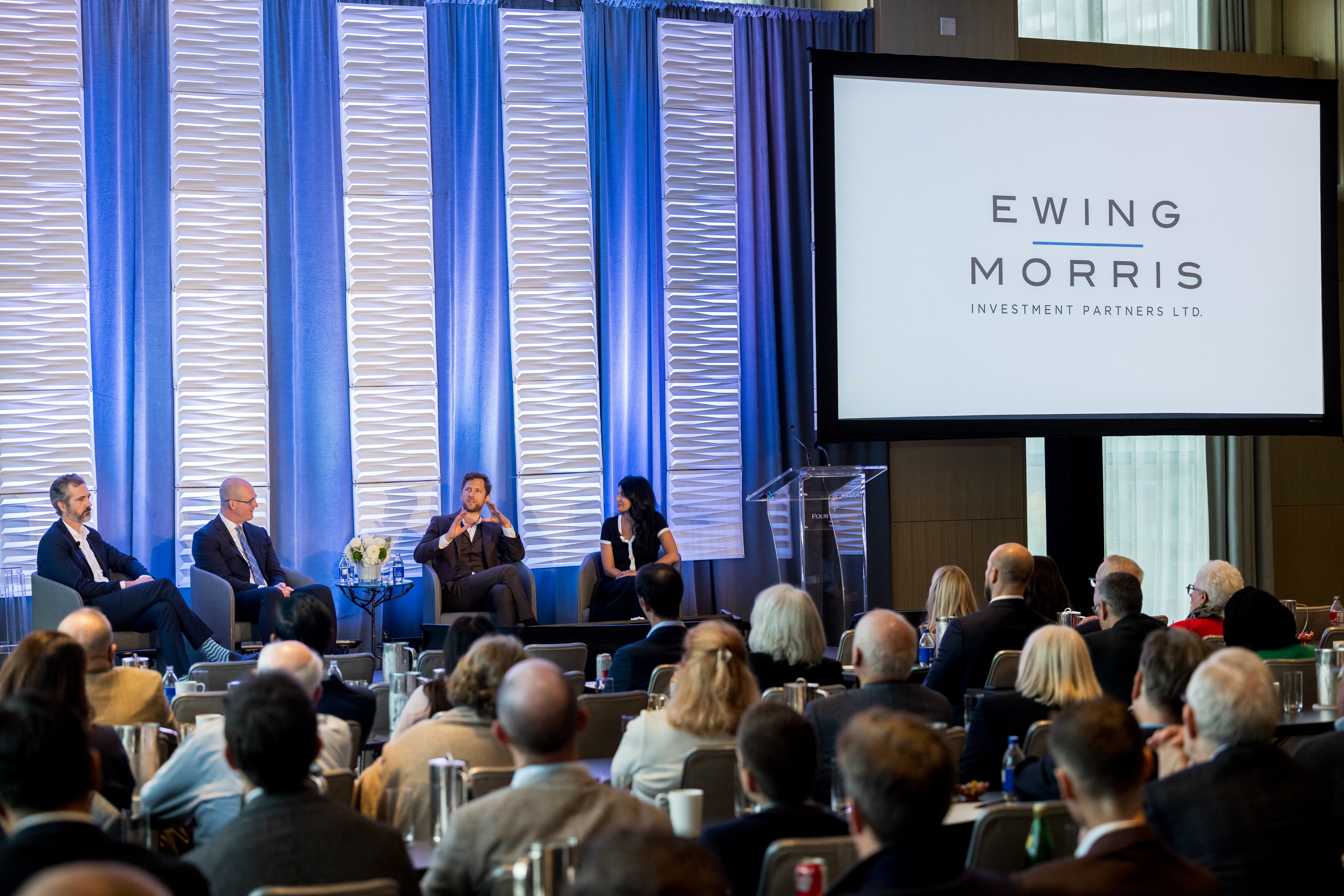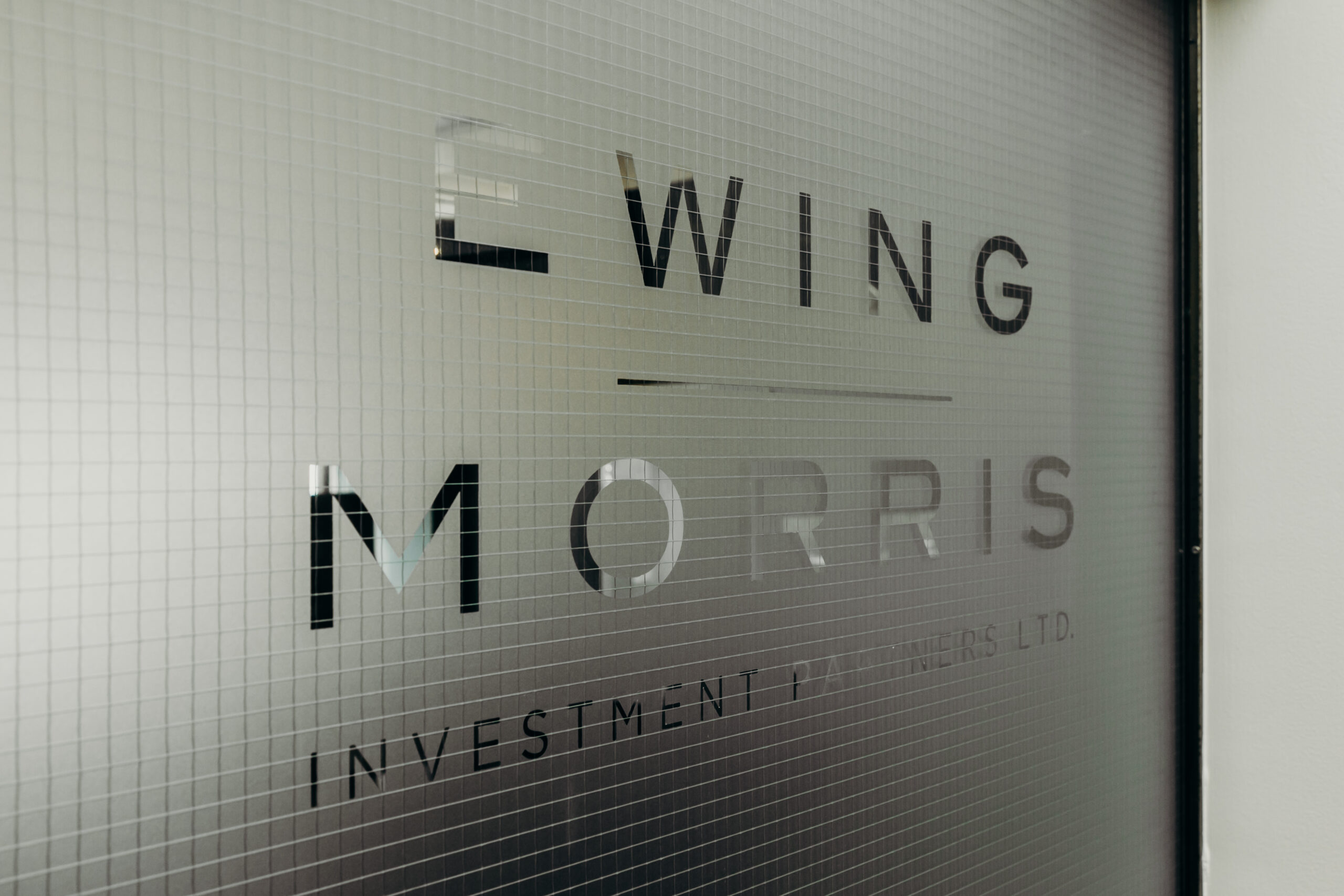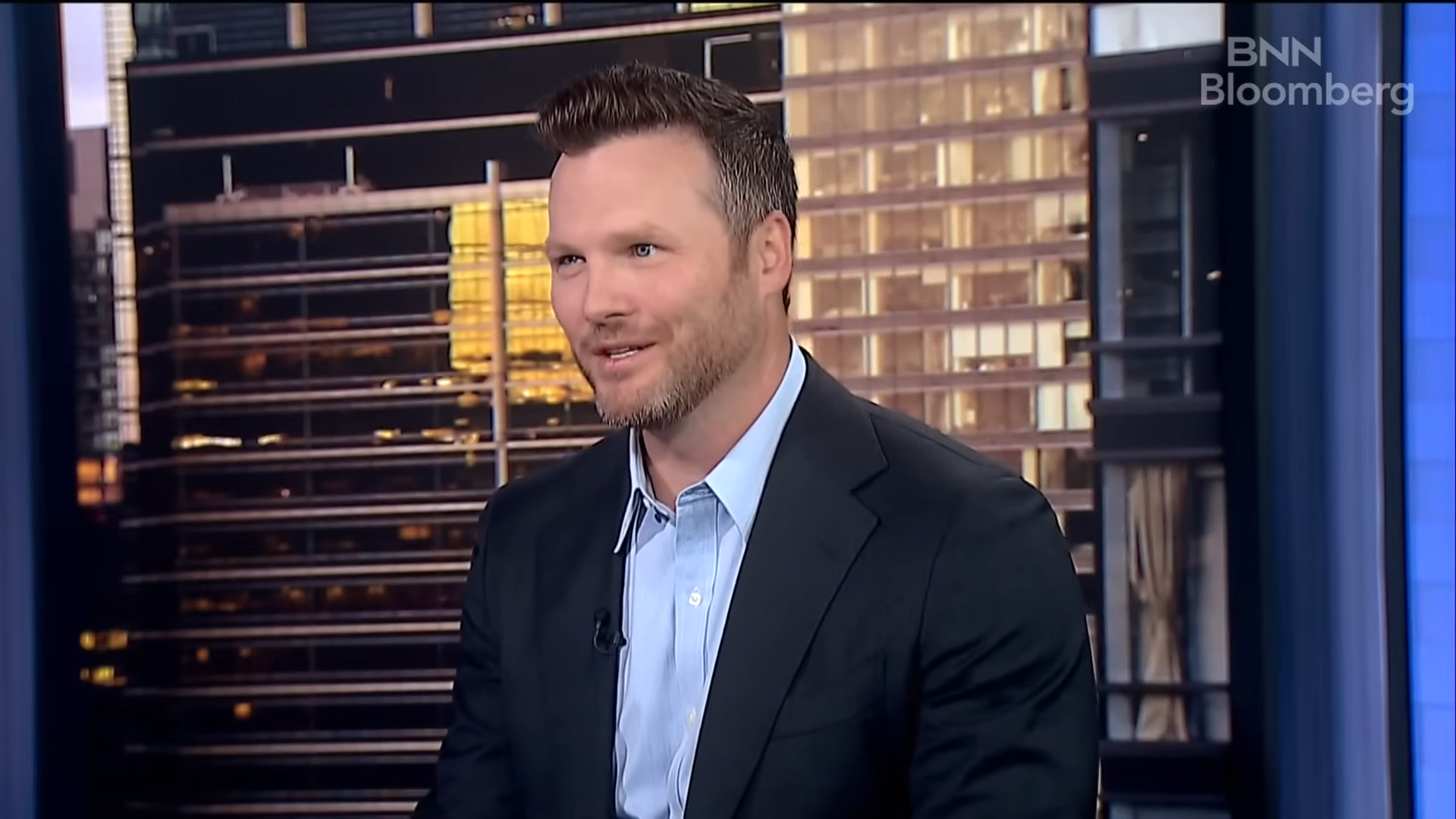An Interview with Elmer Kim, CIO of the Hyatt Family Office and Breann Kelly of Ewing Morris
Breann Kelly:
So chief investment officer, much like chief operating officer of an investment firm, probably isn’t top of the list of things little kids dream about being when they grow up like an astronaut or firefighter. So, can you tell us a little bit about how you discovered this kind of role and what led you to it, and how would you describe your job at a family reunion?
Elmer Kim:
Like a lot of good things in life, you kind of land. With some serendipity it just kind of happened for me. I’ve been in this business since 1995 in one form or another. I’m now with my second family, the Hyatt’s, who are incredible entrepreneurs. Michael and Richard Hyatt and I was with another family for almost 20 years and he was an incredible, one of Canada’s greatest entrepreneurs for the last 50 years.
And so I started in a very limited scope as a controller, VP, finance, CFO, and as you grow and as the organizations grow, you kind of walk into the areas where you have some value. And that’s how I ended up where I did. I think the context is, in Canada there’s about 500 to 700 families with wealth of somewhere between 50 million and above. It’s a much smaller number than people think. You probably have fewer people with $100 million than the city of Chicago, but it is a vast, vast pool of wealth. I started early and wouldn’t have hired myself, that’s probably the good answer, but I kind of fell into it.
Breann Kelly:
Could you share a little bit with us about the specific objectives of the Hyatt Family Office?
Elmer Kim:
I think at the heart of it, our role in this family office is when you put up the endowment thing, I think that captured about 80% of it. Our role here is really to fulfill the mandate of that family office for the principals. What do they want to accomplish for the next 50 years, for the next two generations? So foundationally you’re talking about, everything from tax, tax work, the audits, the planning, the legals, the estate work, but fundamentally it really comes down to how do you bring fulfillment to the principals. What do they ultimately want to do? Do they want to have a career in business? How do you encourage the next generation of people to come through as shareholders? How do you find something that’s meaningful for them to do? It’s easy enough to make money. Every once in a while, my partner Michael Hyatt and I talk and I say we should just fire the vast majority of people and give all the money to a large wealth manager like BlackRock and he says why would I want to do that? I’m still young, I’m very important and it’s very important for me to do something that’s very important! And he is right, and I’m generally wrong! What it comes down to is- you need to have a purpose in life. What do you want to accomplish until the next generation?
Our job here is to make sure that whether you do the optimal planning or get the optimal returns, you have fun, have fulfillment in your life, be engaged with your community, whatever you define that community to be. So that’s our job, to set that table for them to do, whatever they want to do.
Breann Kelly:
Well, that sounds like a lot of priorities to juggle, and with such a large pool of capital. How do you think about your approach to asset allocation bearing those things in mind?
Elmer Kim:
I think when you put up the slide of ETFs and when Will initially asked me to speak, I said I’m the last guy you should have here, because I don’t believe in portfolio management, I believe in broad exposure to the market and I think you should really think about somebody that’s not going to crap all over your business model. And he said no, no, no, we have this whole new thing going on. I’m not going to really tell you about it, but you may be the right guy to have some sincerity and honesty and a “real life” approach to what we’re doing. I fundamentally believe in the passive model. We’ve actually changed banks in the US and we’ve changed banks in Canada to get access to ETFs. It was a lot of work for our CFO and our legal team to do- it was a real pain.
About 15, 16, 17 years ago I had a chance to share an office with a gentleman named John McNaughton. John McNaughton was a giant in the financial services industry. He started very young, grew up outside of London Ontario and he ultimately became the CEO of Burns Frye, a very senior member of the Canadian financial community. He was the first president, CEO and chair of CPPIB, chair of BDC and he was asked by the government to sit down and fix the Nortel problem as that was exploding. He was the insider’s insider. I used to try to squeeze into his office at every chance and ask him how do you invest? This is the Gordie Howell of our world, and he would very politely kick me out of the office. After two or three sessions of trying to squeeze in his EA came to me and said, do you really want to have a sit-down with John? I said absolutely! He goes, every Tuesday, show up here at 11 o’clock and you can have a one-hour chat with John. Every Tuesday, regardless of where I was in the world, I would fly back to Toronto, make sure I got my suit and tie on, sat down with John and we would talk for exactly one hour and he would politely kick me out of the office at 12, and then I’m done.
And what I learned was, in 2009-2010, there was no beating the market. We were very active in trying to find the proper managers in the market. How do you get better than market returns? And here’s a guy from the inside world telling me it’s ETFs- this is in 2009- 2010. So if Gordie Howe is telling me this is how I’m going to score goals, this is what I’m going to do!
So from that point on at a personal level and from the family perspective we start to move into ETFs, and I would say we would have been one of the first to do so. When we had an opportunity to set up the family office in 2017 with the Hyatts, we did exactly the same thing. We have a very methodical approach in ETFs. We still have a little bit of fun in doing some picking of stocks here and there, because you need to have a purpose. And then we do the barbell approach and say, hey, how do we get a little bit more alpha in by doing certain other things? So you know to get better returns, you have to give up in either liquidity or leverage or risk. But if you give up on two of those three things, it’s going to hurt every once in a while, as we’ve seen in the recent 2020 cycle.
So we have tied ourselves to some private equity funds here and there. We’ve done some special opportunity opportunities with Ewing Morris and some real estate. If you look at our asset allocation, we have an incredible amount of liquidity in our public ETFs. We don’t believe we can pick the market; we can’t imagine how the interest rates are going to go, we can’t imagine what the election cycle is going to look like, but we have the ultimate confidence that things will work out- we’re optimists at heart. If you ask me what our asset allocation looks like- our goal, and we’re not there all the time, is we try to get to 5% or 10% in cash and cash like stuff. We like to get to 30% to 40% in public market ETFs and very large cap S&P 500 ETFs. We like to get to 15%-20% real estate with other things being the balance- everything that’s illiquid, that’s not real estate, so private equity funds, direct deals, co-investments, venture deals and so on and so forth. If you add all of that together, we’re hoping to get somewhere between 8% to 10% per annum return and, luckily for us, it’s been a good cycle. This most recent market has been difficult for everybody, but we’ve got a couple dents in our bumper. But overall, our portfolio is performing well and what we measure, which is liquidity, we’re very strong on. That’s how we’ve been approaching it. What I try to do is- can we do what the CPPIB is doing, shrink it down and make it super-efficient and have some fun at the same time.
Breann Kelly:
I love that story about your light bulb moment with your own personal Gordie Howe and some of the points that you were mentioning about the risks of alternative investments resonated as well. As you know, Darcy mentioned in his remarks some of the issues that our clients have spoken to us about, getting caught in illiquid investments, and you have to be very thoughtful about those choices, given the veritable buffet of alternatives that are available nowadays to investors. So, in your role, how do you go about assessing those different alternative opportunities and figuring out which ones play the right position in the portfolio you’re trying to structure?
Elmer Kim:
There’s a lot of moving pieces to all of this. We have a huge degree of confidence in the US dollar, so we have a fair bit of allocation down there and a bulk of our assets are sitting in US funds in one form or another. We believe in relationships, and the hardest part of making an investment is that first risk profile. Are you meeting the right people? Are these the people that you’re going to go through multiple vintages and multiple cycles with? We spend a lot of time making sure we have similar likes and dislikes with the managers and then we hope to continue the relationship over multiple cycles.
On the illiquid side we’ve been moving more towards larger funds and larger profile managers.
Partly because we think that over a longer period of time, as the markets are getting much more efficient, it’s getting much more difficult for the smaller managers to compete. We also think there’s more volatility in the market, whether it’s public or private, and for us with the smaller managers it’s riskier to invest with them. We do believe that governance is sufficiently difficult and it’s going to get more difficult as time goes on, so the regulatory environment’s getting harder. When we first started off, we had some smaller managers, sub a billion dollars to $500 million, that extract some more juice out of the returns. Now as we’re looking at it, as we go more illiquid because we’re tied down for a longer period of time, we’d like to have better governance and a better and stronger ability to outlast the cycle as the world gets more volatile.
Breann Kelly:
I wanted to go back to something you were saying earlier about purpose and speaking a little bit more about some of the non-investment related challenges that might come with running a family office. How do you think about things like legacy and intergenerational wealth transfer and how does that manifest in your day-to-day.
Elmer Kim:
There’s a handful of us that get together in the lieutenants or the consigliere bar every quarter or so and we compare notes and share what our principals are doing and what’s going on.
It all depends on the individual principals. It depends on where they are in their life cycle, how many people are in their shareholder or family base and physically where they’re located. A lot is going on in terms of “other needs”. Philanthropy is an important part of most of these families. If you ask, the greatest joy for almost all the principles comes from committing and writing a check to these important causes. Our team spends a fair bit of time in this area. They have a different way of doing philanthropy and a very meaningful way to get multiples of returns, of leverage of the dollars that they employ. So that’s an important part of our office and hopefully going forward it becomes a much more meaningful part of the impact that this group does.
Breann Kelly:
You mentioned that there’s a limited number of families in Canada who have the level of assets to start their own family office. We heard about the endowment model from Darcy, and listening to some of what you’re saying, what advice would you have for those families in the room who may not be at that level of wealth just yet but are thinking about how to structure their own family wealth to start planning for their own family legacy?
Elmer Kim:
Canada is 25 to 30 years behind where the US is in terms of this wealth development or wealth family management ecosystem that exists. In the US, you see this cluster of multi-family offices being set up, and the challenge in my mind is, how do you take away the agency risk? Our family office is fully dedicated- ensuring we throw our bodies in front and making sure the family gets what they ultimately require for the next 50 years.
Outside of multifamily offices their role is in fee generation, now, that doesn’t necessarily work. Oftentimes it does coincide and works in parallel, but that’s a bit of a challenge. If you have an investable net worth of less than $50 million or less than $100 million, it’s expensive to set up a family office in terms of the cost structure and the mental and emotional overhead of having very expensive people around- my partners would say I’m not the easiest guy to deal with! It takes a lot of energy to manage an office- you’re managing a public company of some size. There is a need to coordinate, coming together once a year to decide what we need to do- I think that’s critical. The KPMGs and the Richters offer wonderful family office environments setups with technical skills, but what they don’t provide is that forward-looking perspective. You have to say, you’re actually thinking about this, but this is most likely the outcome its going to be. So how do you slowly tilt that boat or that ship in that direction without compromising the needs of the family?
Fundamentally what we’re trying to do is very low cost for the bulk of the assets, highly liquid, because we talk about net worth but what I like to measure is liquidity. Liquidity either saves you, makes you money or kills you. Net worth doesn’t do any of that stuff. It’s how much cash you have at that moment in time that’s going to be able to save you? So we measure liquidity- and that ETF model gives you immediate liquidity. We’re willing to live with illiquidity over longer periods of time, because we have this big bucket of liquidity and that’s how you’re going to get some extra juice on the other side. So that’s how we kind of balance it out. It’s not a lot of rocket science, but on Bay Street and Wall Street we try to make things complicated so we can charge more, but at the end of the day, it’s really plain and simple- invest like an immigrant, pay off your debt, don’t have too much leverage and have some fun as you go.
Breann Kelly:
I appreciate you sharing your experience with us today and being so candid on your asset allocation strategy. And they say, imitation is the sincerest form of flattery, so we’ll go with that and let the record show I found you nothing but wonderful to deal with, so thanks for your time today Elmer and for joining us.



